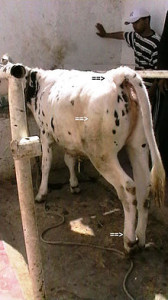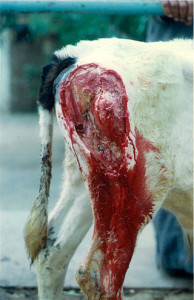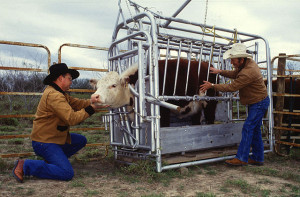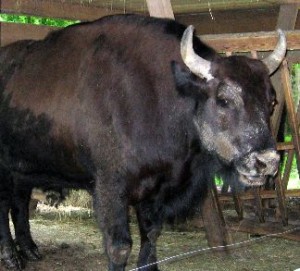Health of cattle is a major factor in successful cattle farming and production. As seasons change, livestock can become more susceptible to diseases. Animals need to adjust to the changing climate, and so, they use more energy than usual, which may weaken their immune systems.
If you know what types of diseases are more common during this time of year, you could easily become more aware of them and take precautionary measures before they become more problematic for individual animals, or the entire herd.
Although it is not possible to know about all of the diseases that affect your cattle, it is still useful to know the symptoms of the most common and fatal diseases that infect cattle. If you find that any of the animals in your farm need treatment for any of the symptoms listed here, contact your veterinarian right away.
Bovine Respiratory Disease Complex (BRDC)
Bovine Respiratory Disease Complex (BRDC), also known as “shipping fever” is a kind of pneumonia, caused by complex interactions between pathogens, host factors, and environmental factors. This disease is commonly seen in stressed or shipped calves. The most common causes of stress in young calves are shipping, weaning, de-horning, dust, and climatic changes. Stress can weaken animals’ immune systems and make them more susceptible to disease caused by bacteria and viruses.
BRSV (Bovine Respiratory Syncytial Virus)
The Bovine Respiratory Syncytial Virus (BRSV) is a more serious respiratory condition in cattle that is caused by stress and viral infections in calves. The symptoms are coughing, runny nose, and fever.
Clostridial Disease, or “Blackleg”
Blackleg is a fatal disease of young cattle, between the age of six months and two years. The disease is caused by an infection of Clostridia bacteria. This disease is most common among calves younger than two years of age and can cause gangrene of the feet.
The first signs of Blackleg disease include loss of appetite, rapid breathing and lameness. Animals usually have high fever and appear depressed. Swelling may appear in the chest, leg, shoulder, or elsewhere. Swelling is small, hot, and painful at first, and might become spongy and gaseous. Animals usually die within 24-48 hours.
BVD (Bovine Viral Diarrhea)
Bovine viral diarrhea (BVD) is caused by Pestivirus and causes loss in cattle farms. This disease can cause abortion in pregnant cows, and causes respiratory diseases in non-pregnant animals,nasal discharge, coughing, and fever are common symptoms of the disease.
Haemophilus Somnus
Haemophilus Somnus is a bacterial infection which shows up in a variety of neurological, respiratory, and reproductive disorders. This bacterium interrupts blood flow to the infected organs and causes them to die. The haemophilus somnus bacteria have been found to attack several organs in the body of cattle. The disease is most commonly found in Septicemic, Respiratory, or urinary and reproductive systems. This disease can cause the death of the fetus with infection of the uterus, and in long term will extend itself in the vagina. Cattle in close proximity can get infected form urine or by sniffing, and get respiratory form of the disease. Disease can be transmitted to bulls during mating.
PI3 (Parainfluenza Type 3)
This is a common, mild respiratory disease that suppresses the animal’s immune system, allowing other diseases and infections to develop. The virus is shed in nasal and eye secretions, and infects non-vaccinated animals through the mouth and nasal passages.
Rabies
Rabies is a fatal disease of the nervous system that can infect any warm blooded animal. Rabies is transmitted by saliva and can infect animals in close proximity. During the incubation period of the disease, the virus moves towards the brain through nervous system. Symptoms of rabies in cattle are often mistaken for other problem. The physical symptoms include anxiety, high fever, and excessive saliva production. The symptoms in cattle are recognized by their behavior. They might suddenly become aggressive. Rabies symptoms might take up to 50 days to show. Rabies vaccination is available from your veterinarian or in animal hospitals.
Controlling Viral diseases
Although it is impossible to eliminate stress entirely, stress can be a major cause of disease contraction in young cows. Stress could be minimized by handling animals carefully. Keeping animals in sanitary conditions will also help to reduce the spread of this disease. To prevent this disease, routine vaccination is needed.
 Regular checkups and monitoring can save you from losses and wide spread epidemic of diseases among healthy animals in your herd. Identify and quarantine sick animals as soon as possible and take necessary measures to treat them.
Regular checkups and monitoring can save you from losses and wide spread epidemic of diseases among healthy animals in your herd. Identify and quarantine sick animals as soon as possible and take necessary measures to treat them.
Poor feeding, poor animal care, and improper sanitation can lead to many fatal diseases. Early detection and treatment is necessary to stop the progress of diseases. If treatment is delayed, survival rate of sick animals will be less.
Intervention for enhancing animal health, such as the use of antibiotics, genetic modification, and feeding animals with GMO food stuff is popular and has attractive short-term returns. However, these methods have been found to be harmful for natural evolution and the biodiversity of animals, and it also interferes with human health in the long run.
P. S: – Got a question or comment? Would you like to learn more about animal diseases?
Please add your comments in the comment box below.
Source: Sustainable Livestock Nutrition
Credits:
Common Disease in Cattle | Cattle Care | Tractor Supply Co.
University of Florida, Institute of Food and Agricultural Sciences (UF/IFAS)



